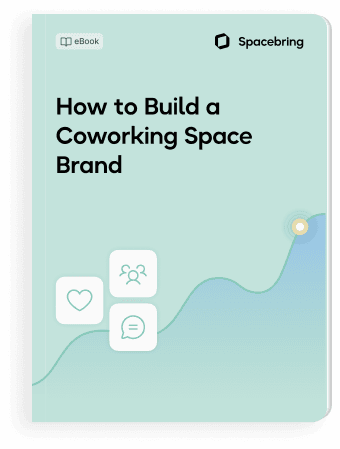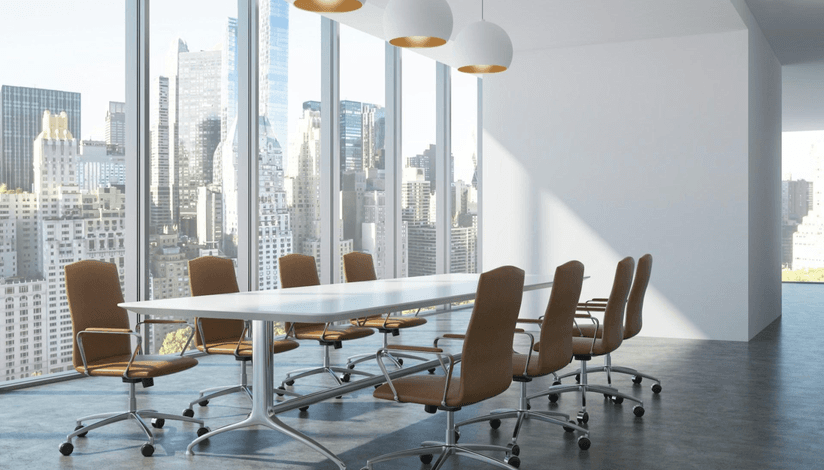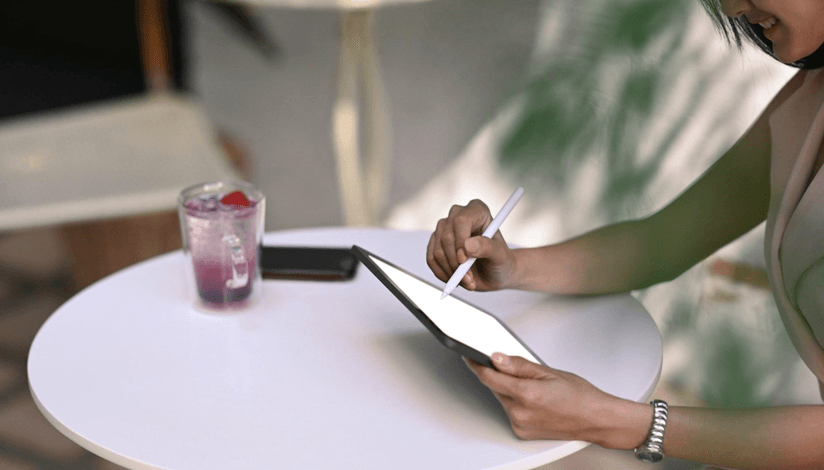Market overcrowding can be very challenging for many types of businesses, as it’s important to stand out from the rest. Shared work spaces are becoming the most common place to work for professionals, but in a sea of sameness, many struggle to create a distinct identity. The truth is, relying on better quality desks and faster Wi-Fi connection is no longer enough.
To get ahead of the competition, shared space operators need to create a space that turns it into an experience—where the brand can form a personality of its own. This guide provides a strategic blueprint for using differential design to make your coworking space stand out and empower your workforce to perform better day-to-day.
Part 1: The foundation—defining your unique identity
Before a single piece of furniture is chosen, a differentiated space must be built on a clear and authentic identity. This foundation is about defining who you are for and what you stand for, moving from a generic template to a space with a soul.
From generic to genius: Finding your niche
Clarity of purpose is the first step in putting differential design into practice. Too many coworking space owners make the mistake of attempting to please everyone. It can weaken their individuality and produce generic areas that blend in with the surroundings.
Differentiation starts with designing for specificity rather than universality. Differential design is more than an aesthetic choice; it's a strategic tool. It involves intentionally crafting every aspect of your coworking space to reflect what sets you apart.
If your target members are tech entrepreneurs, then your space should speak to agility, innovation, and speed. That might translate into modular furniture, ultra-fast internet, seamless plug-and-play options, and a color palette that energises rather than soothes.

On the other hand, if your audience is freelance creatives, then your design language might lean toward open layouts. Rich textures from luxury cushions placed on comfortable seats can be used to inspire quiet reflection, as well as collaboration between workers.
Corporate remote workers might expect private zones, formal meeting rooms, premium ergonomic setups and a professional aesthetic that mirrors the headquarters they're stepping away from.
Root your brand in your space: Authenticity & localization
Once you know who you are for, your space must become the physical embodiment of your brand. Branding is the lived experience of your values through design, as you want to showcase what your business is about to your target audience.

Striving for your coworking space to become a recognized brand?
If your brand prioritises sustainability that should be evident in everything from the materials you use to the way you handle waste and energy.
If your brand is built around creativity and innovation, then the layout, art, colour schemes and the flexibility of the furniture should reflect that energy. Investing in professional logo and branding services can further strengthen this identity by ensuring that your visual presence aligns seamlessly with your physical space.
Branding in design is about consistency and coherence. Every element from lighting choices to signage fonts contributes to how members perceive your mission.
A significant aspect of this authenticity, often ignored by operators, is localisation. Some coworking spaces get so streamlined that they feel anonymous in an attempt to create slick, scalable environments.
However, your location is a design asset, not just a pin on a map. Your space can become more meaningful to the community you serve by incorporating aspects of local history, culture and artistic expression. Local artists' murals or art installations, room names inspired by local landmarks, or the use of materials from local manufacturers could all be examples of this. It should be instantly apparent to a member that your coworking space is part of this city and neighbourhood rather than a generic global template.

Part 2: The experience—designing for people & productivity
With a strong identity in place, the next layer is designing the functional experience. This is about how people interact with the space on a daily basis, ensuring the environment is not only attractive but also highly conducive to productivity and connection.
Layout as a journey: Crafting community and flow
What truly sets a coworking space apart is not just how it looks, but how it works for the people who use it. Differential design considers the daily behaviors of the workforce to give them a better space to work. This means thinking beyond furniture selection to how the entire environment functions. Partnering with a monthly flat fee design service can help coworking spaces maintain visually appealing and functional designs on an ongoing basis, ensuring the space evolves with users’ needs without exceeding budget limits.
Planning a layout with both the community and workforce in mind is an effective strategy. Consider how your members move around the room, how they switch between tasks and where meaningful conversations typically take place rather than designing uniform desk rows.
The member experience can be completely changed by designing areas for various working styles, such as quiet areas for intense concentration, open lounges for teamwork and kitchens that serve as gathering places.
You can create a feeling of flow and belonging by providing room for both solitude and interaction. The layout should be made to encourage productivity rather than just be good to look at, as that will only get you so far.
The invisible advantage: Seamless technology integration
Technology is another area where differential design plays a critical role. While many coworking spaces boast high-speed internet and digital access, differential design means offering tech that is both intuitive and tailored. This could mean touch-free entry systems, smart meeting room displays, or personalised lighting and climate controls in private offices.

For today's coworking space operators, it is essential to design with technology in mind, from plug accessibility to cable management. The best technology software will work effectively and doesn't require attention.
It improves the area without drawing attention to itself when it is skilfully incorporated into the design. Your coworking brand can be enhanced and a premium user experience can be produced with this degree of flawless functionality.
Generate recurring revenue and offer exceptional customer experience at your shared or coworking space
Part 3: The atmosphere—creating an unforgettable environment
Beyond function, a truly differentiated space creates a distinct atmosphere. This is the emotional layer of design, engaging the senses and aligning with member values to create an environment that feels as good as it looks.
More than meets the eye: Designing for all five senses
Beyond the functional, a strong coworking design also taps into emotional and sensory experience. While visual appeal is important, truly memorable spaces engage all the senses.
Sound is one of the most underrated elements of good coworking design. Without proper acoustics, even the most beautiful space can quickly become chaotic or stressful. Investing in sound dampening materials, quiet HVAC systems, and curated background music in common areas can elevate the atmosphere significantly.
Scent is another subtle yet powerful differentiator. A calming scent at the entrance or in shared restrooms can set a positive tone from the moment someone walks in.
Mixing natural materials like wood and stone with soft fabrics can also create a tactile richness that contributes to comfort and warmth. Even the feel of a chair’s armrest or the smoothness of a tabletop plays into a member’s unconscious perception of quality.
By designing with all five senses in mind, you make the environment feel more immersive.
Design that does good: Sustainability as a core principle
Sustainability is now expected rather than just a trend. Environmental responsibility must now be incorporated into differential design as a principle rather than merely a checkbox.
Installing bike racks, providing compost bins, using recycled materials, and making energy-efficient lighting investments are all examples of design choices that demonstrate your dedication to a healthier environment.

Members are becoming more concerned with the principles underlying the companies they patronise, and your coworking space can differentiate itself by making sustainability more than just visible.
Reclaimed wood, zero-VOC paints and solar-powered lighting are examples of design features that demonstrate your space was created with the environment in mind. These features not only look good, but they also feel good. Additionally, they gain credibility with professionals who are becoming more environmentally conscious.
Amy King on how to start a sustainability journey as a coworking business owner
Part 4: The future—evolving your differentiated space
Finally, differential design is not a static project that ends when the doors open. The most successful spaces are living environments that adapt and grow along with their communities, ensuring they remain relevant and cherished over the long term.
From static space to living environment
Differential design continues after the paint is dry, as it’s a dynamic process. Ongoing design choices ought to take member input into consideration. The area should change with your community. Think about adaptable features that let you adjust to changing needs without having to start from scratch, like movable walls, modular furniture and multipurpose spaces.
One way to make your space not only beautiful but also human-centered is to listen to your members and make necessary adjustments. Including your community in the space's development can also increase participation. Members experience a sense of loyalty and ownership when they see that their suggestions are incorporated into design updates.
Conclusion: Your design is your strongest message
Ultimately, the way your space is designed sends a clear message. It shows what kind of work happens there, who it's built for, and what people can expect when they walk through the door. By building your space on a foundation of clear Identity, crafting a seamless member Experience, and curating a memorable Atmosphere, you create an environment that fosters belonging. It supports how people work, how they connect with others, and how they grow.
When a coworking space is planned with this care, it becomes easier for people to focus, share ideas, and feel motivated. Operators who think of design as part of their overall strategy stop relying only on price or location to attract members. Instead, they build a space that offers a better experience for the entire workforce. That’s what sets them apart and keeps people coming back.
The article was written by Enrik Karlsson, a retired designer who enjoys sharing his thoughts on all things interior design. His writing covers everything from sustainable interiors to the psychology of design.






